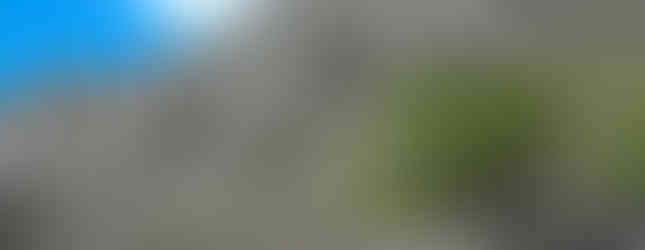We send ourselves to the Tatacoa Desert
- Sanni & Gerri@

- Jan 11, 2022
- 3 min read
Updated: Jan 18, 2022
15. to 18. November | German Version
After quite cool evenings and night temperatures in Bogota, we yearn for some warmth. After a short research, we spontaneously decide to go to the Tatacoa desert.

Okay, maybe a little extreme, because it will probably not be warm there but rather hot, considering the name. The fact that Colombia has a desert is new to us. Being precise, it is not a desert in the classical sense. Geologically, the landscape is called a tropical dry forest. The area is surrounded by mountains, the central cordillera and the eastern cordillera. The rain gets stuck in the mountain range around the Nevado de Huila (5750 m), so even in the rainy season of Colombia hardly a droplet arrives in Tatacoa. Due to the high average temperatures of over 28° degrees Celsius, the bit of rain (approx. 1,000 mm per year) evaporates faster than you can see. The Tatacoa Desert is an area of about 330 square kilometres almost directly on the equator, in southern Colombia. The desert owes its name to a native snake, which has unfortunately now been eradicated. It was also called snake with two heads because it was the only one of its kind that could also crawl backwards.
The total distance from Bogota is only 281 km. The roads in Colombia are of course not comparable to those in Germany and so our overland bus takes 7 hours for this relatively short distance, to the next larger city of Neiva. The path is quite "demanding" and leads over breakneck, winding but at the same time scenic roads.
Once in Neiva, it goes another hour and a half by Collectivo bus to the village of Villavieja. A Collectivo is usually used in places without regular buses. It is a kind of minivan that waits until enough passengers who have the same destination come together. You need some patience as far as departure times are concerned, but it is significantly cheaper than a taxi. The last mile to the hostel is done by tuk tuk over the sandy and bumpy streets. This time we treated ourselves a hostel with a pool, with a wise expectation that we certainly need some cooling off after the hikes in the desert.
The next morning we go to the first desert tour after a typical scrambled eggs & toast breakfast. Our hostel is located at the entrance to the desert and so we take a taxi to bridge the 5 km to the first desert highlight.
The Labyrinth of Cusco
Probably the most spectacular area of the desert is "Labyrinth del Cusco"; also called the Red Part of the Desert. Once there, we have the impression that we are in a completely different world. Bizarre, orange-red rock formations and huge cacti. On Galapagos they told us that a cactus grows a few centimetres a year. If this should also be the case here, then the cacti around us are several thousand years old. Wow. The reddish colouration of the rocks is caused by minerals, e.g. Copper.
Los Hoyos
After another 5 km we come to the grey part of the desert - Los Hoyos. Sulphur & phosphate is responsible for making the soil gray. But there is no trace of dreary greying here. Over time, erosion has left very bizarre rock formations. There is also a bit of life in the desert. In addition to vultures and other birds, we also discover some very beautiful lizards. At the end of the tour, a pool of supposedly natural sources awaits us. However, the model does not really convince us. Beautiful is something else. So, despite the about 35 degrees in the shade, we decide to drink only one juice before it goes back.
In the evening we spontaneously visit the Star Observatory. It is supposed to be great in the desert without light pollution. When we leave, there are no clouds in the sky. However, this changes as we listen to a lecture on star constellations in Spanish. Which makes Sanni a little unfoidable. Both Spanish and clouds. In addition, full moon. However, we can still catch a few views of the moon, Jupiter and Saturn.
The visit to the Tatacoa desert is definitely a highlight in Colombia for us and worth the long journey. We also particularly like the time we spend in the village of Villavieja. In the afternoon and evening we stroll through the sandy streets here in flip flops and find a super delicious restaurant. There is really no sign of tourism here. We are perceived friendly but only briefly and then the locals continue to pursue the busy everyday life. We like to sit at one of the street corners, a cool beer in our hands and just watch this wonderfully unexcited hustle and bustle.
* The English version of this blog is supported by automated translation*


































































Comments